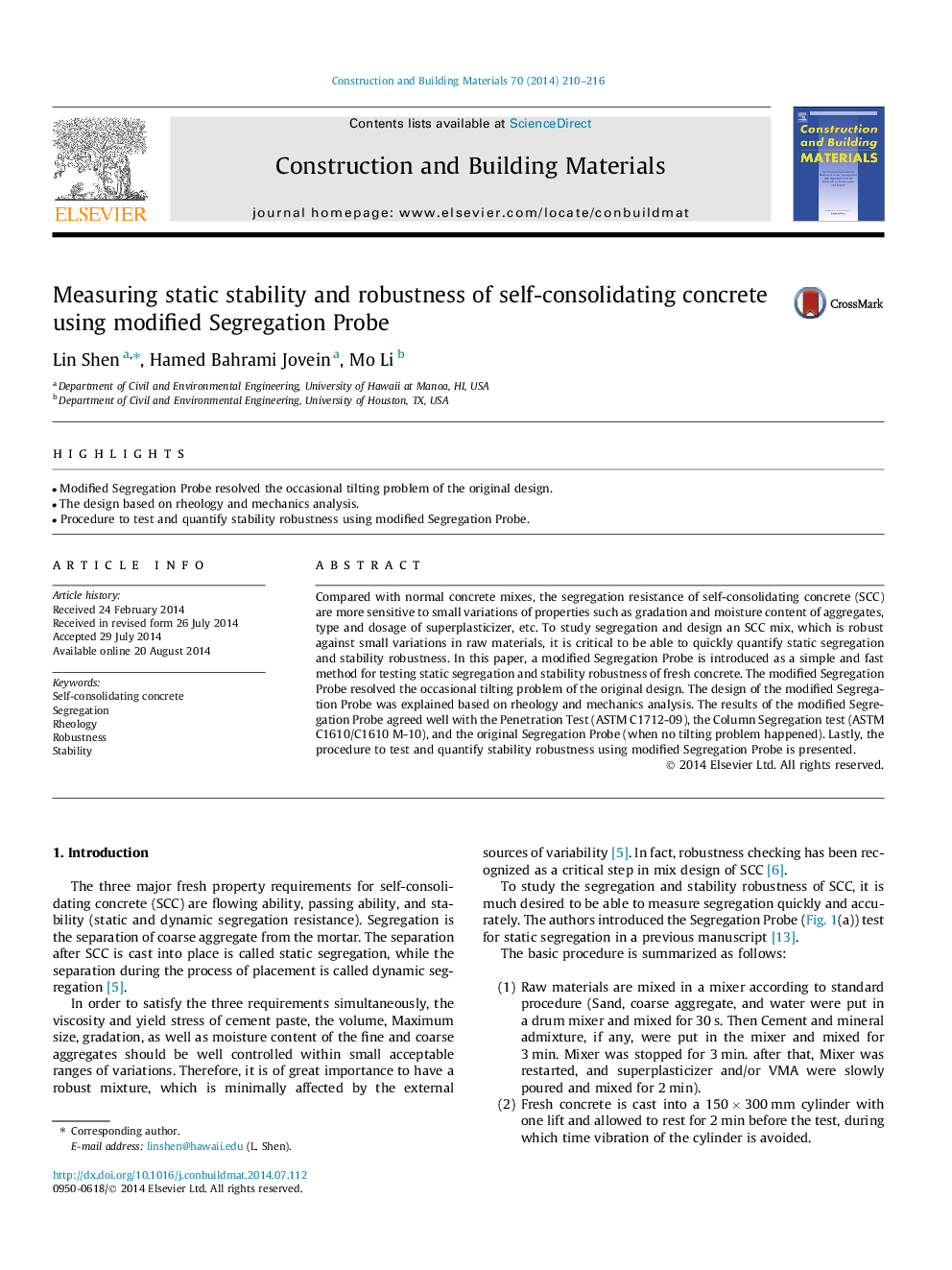| Article ID | Journal | Published Year | Pages | File Type |
|---|---|---|---|---|
| 257354 | Construction and Building Materials | 2014 | 7 Pages |
•Modified Segregation Probe resolved the occasional tilting problem of the original design.•The design based on rheology and mechanics analysis.•Procedure to test and quantify stability robustness using modified Segregation Probe.
Compared with normal concrete mixes, the segregation resistance of self-consolidating concrete (SCC) are more sensitive to small variations of properties such as gradation and moisture content of aggregates, type and dosage of superplasticizer, etc. To study segregation and design an SCC mix, which is robust against small variations in raw materials, it is critical to be able to quickly quantify static segregation and stability robustness. In this paper, a modified Segregation Probe is introduced as a simple and fast method for testing static segregation and stability robustness of fresh concrete. The modified Segregation Probe resolved the occasional tilting problem of the original design. The design of the modified Segregation Probe was explained based on rheology and mechanics analysis. The results of the modified Segregation Probe agreed well with the Penetration Test (ASTM C1712-09), the Column Segregation test (ASTM C1610/C1610 M-10), and the original Segregation Probe (when no tilting problem happened). Lastly, the procedure to test and quantify stability robustness using modified Segregation Probe is presented.
